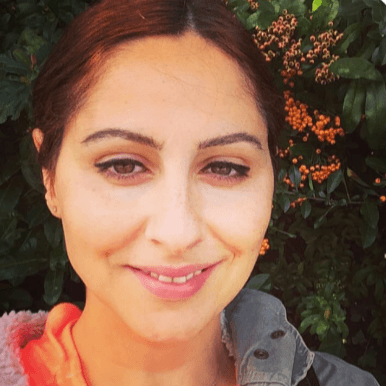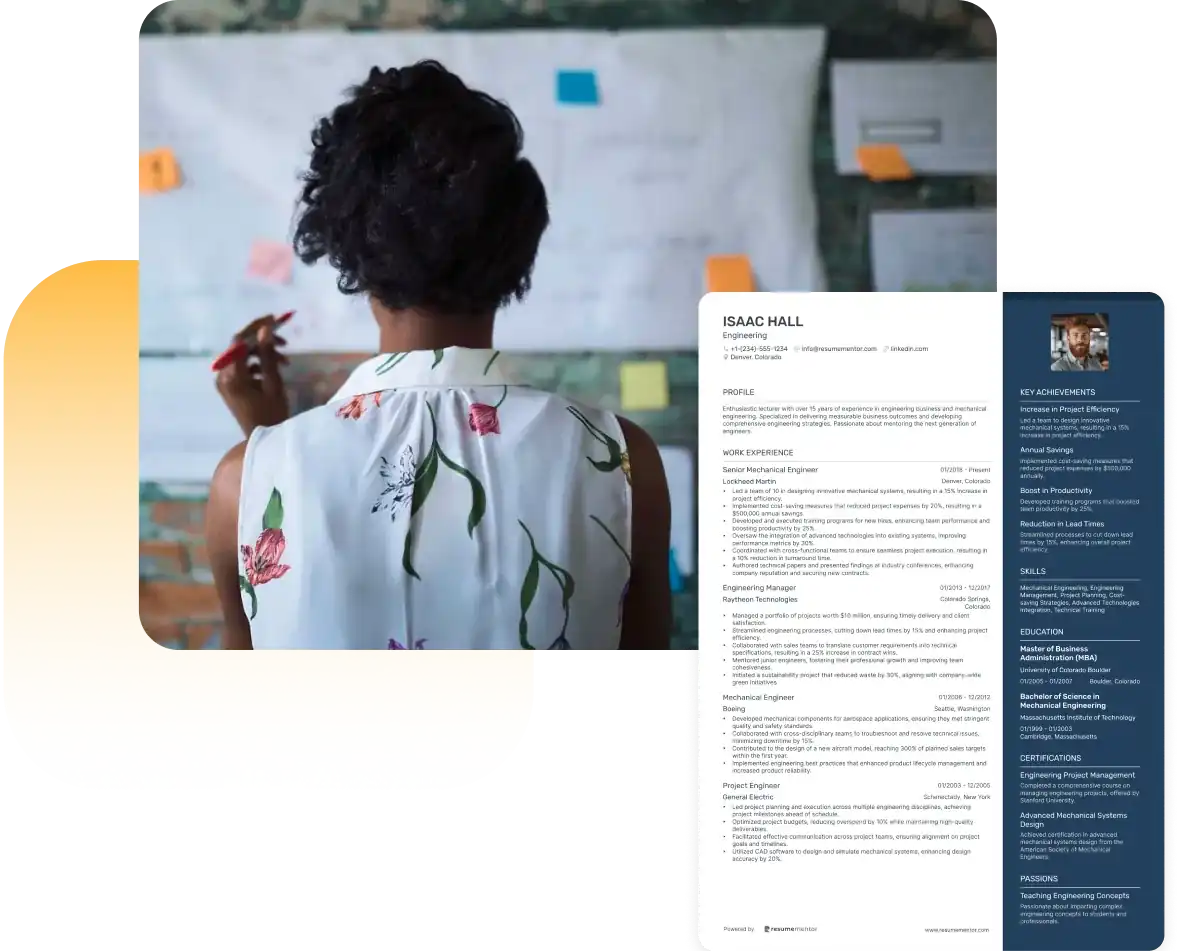Resume Order: The Complete Guide to Structuring Your Resume for Success

Nov 28, 2024
|
12 min read
Catch the hiring manager’s attention by getting the structure on point.
Your resume serves one purpose—to grab the hiring manager’s attention. When you’re creating this document, there are many things to consider. However, one of your top priorities needs to be structure.
Getting the resume order right from the start is a big deal. Put simply, it shows the hiring manager you know what you’re doing.
Key takeaways
- Go for the standard resume order if in doubt. This option works for most professionals and is likely to impress the hiring manager.
- Getting this part of your resume right is vital, as it can also help you create an ATS-friendly resume.
- Using the right resume order will make it easy for the reader and boost your chances of success.
- Create a structure that perfectly showcases your skill level and experience. You can adapt the resume order based on your needs.
In the following guide, we’ll be looking at the standard resume order, other options, and how to make yours easy to read. Let’s dive into it.
Is your resume good enough?
Drop your resume here or choose a file.
PDF & DOCX only. Max 2MB file size.
How important is the resume order?
First things first, we need to talk about why your resume order matters. You might think the structure is unimportant as long as all the information is there. Nothing could be further from the truth.
Why the resume order matters
- Make the right first impression: Hiring managers expect to see a traditional resume order from candidates. Stray from this and you might stand out for the wrong reasons. Perfecting this part of the application process shows you’re a pro.
- Ease of reading: You want the hiring manager to be able to read (and understand) your resume. Using an order they’re familiar with is the way to go. At a glance, they’ll quickly be able to see whether your skills and experience are a good match.
- Highlight important details: When choosing your resume order, you’re in the driving seat. You can decide which aspects of your application to accentuate. For example, if it’s a skills-first sector, you may go for a functional resume order.
What is the standard resume order?
To begin with, let’s talk about the standard resume order. This is the way to go when you’re using the reverse chronological format.
Here’s a quick breakdown of the layout:
1. Header
Your Resume Header includes your basic contact details—your full name, job title, location, email address, and phone number. You can also add extras, such as a link to your LinkedIn page here.
2. Summary or objective
The next section in the standard resume order is either your Resume Summary or your Objective Statement. A Professional Summary is a short paragraph detailing your top achievements and career moments. An Objective, on the other hand, covers what your career goals are and how this role aligns with them.
3. Work experience
Next, you should add your work experience. As the name suggests, this covers any relevant roles you’ve held. You should only go back 10-15 years in the past and use the reverse chronological order.
- •Developed and executed SEO strategies that increased organic traffic by 40%.
- •Managed social media platforms, resulting in a 30% increase in follower engagement.
- •Collaborated with cross-functional teams to launch three successful product campaigns.
- •Created and published weekly blog posts that improved website traffic by 25%.
- •Coordinated email marketing campaigns, achieving a 20% increase in open rates.
- •Assisted in the development of brand guidelines and messaging consistency.
4. Education
Your Education section covers your schooling—i.e. your high school and college education. You may also choose to list your training and certificates in this space. However, some candidates choose to create an entirely separate Certifications section, instead—the choice is yours.
5. Skills
When you’ve covered all of the above, it’s time to add your Skills section. While you’ll have a selection of hard skills and soft skills under your belt, you don’t need to list both here. Instead, focus on including your hard skills as bullet points. You can then weave your soft skills throughout the rest of your resume.
6. Optional sections
Once you’ve added the above sections in that order, you have the option to slide in a few more. We’ve already mentioned including a dedicated Certifications section. However, you may also choose to list a Volunteer Work section or a space dedicated to your hobbies and interests.
Be selective with your resume sections!
When considering which optional sections to add, it pays to be selective. Consider what value each part gives your resume before you decide to include it. Every aspect of your resume should tell the hiring manager something new and interesting about you as a candidate.
What about different resume order options?
The golden rule for most applicants is to use the above resume order. However, rules are sometimes made to be broken. There are two other resume orders to consider. Let’s take a look at them.
Skills-based resume order
Want to highlight your skills over your work experience? Using a skills-based or functional resume format is the answer. The resume order is slightly different from the standard layout.
Here’s how it looks:
- Header
- Summary or Objective
- Skills
- Work Experience
- Education
- Additional sections
As you can see, this approach swaps the Skills and Work Experience sections. You’ll also find that a skills-based resume groups previous work positions by skill sets.
Combination resume order
On the other hand, you might choose to use a combination resume format. This layout can either use the standard resume order or the skills-based layout as it combines the best of both worlds.
How to choose the right resume order for your application
For most applicants, we strongly recommend using the traditional resume order. But when should you mix things up? Here are three times when it could be smart to use a different order.
New graduates
If you’ve recently graduated, you probably still lack work experience in your industry. In this scenario, you want to emphasize your skills and education over your prior jobs. Using a functional resume format is the answer. That means switching the Skills and Work Experience sections in your resume order.
Career changers
Trying your hand at something new? Once again, you probably don’t have the right work experience for the vacancy. Using either a skills-based or combination format could help gain the reader’s attention. This approach means you can highlight transferable skills and any relevant experience you have.
Technical professionals
Do you work in a highly technical field? Chances are, the hiring manager cares more about your skill set than your work experience. In that case, you might want to use a different resume order. Opt for the functional format as we have described above.
The best resume order for Applicant Tracking Systems
There’s a lot of hype surrounding Applicant Tracking Systems (ATS) and you shouldn’t believe everything you hear. While “the bots” won’t automatically reject your resume, you still need to use the best format for this software. We recommend using the traditional resume format for this reason.
Here are some tips that will help you make your resume ATS-friendly:
Tips for formatting an ATS-friendly resume
- Make your work experience prominent: Ensure the ATS software can quickly scan your Work Experience section. You can do this by positioning the section high up on the page. The standard resume order will help you get this part right.
- Avoid using pictures and graphics: You don’t need to include graphics, graphs, charts, or any other needless pictures on your resume. These images may not be compatible with the ATS software and could hinder your chance of success.
- Get the section names right: Avoid using unconventional resume section names. These may not be understood by the ATS software. If the system can’t find the information it needs, your application may end up falling short of the mark.
FAQs about resume order
Does the order of resume sections really matter?
Yes. The resume order can make or break your application. Getting this right can improve the document’s readability, make it ATS-friendly, and improve your odds of impressing the reader.
Can I reorder sections based on my strengths?
Choose a resume order that suits your needs. So, if your work experience isn’t your biggest strength, pick a different layout. You can place your skills above this section, for example.
How should I structure my resume if I have employment gaps or multiple roles?
If you have gaps in your resume, you may want to structure your resume differently. Using a skills-based resume format will give you a better chance of success overall.
This resume order lists your skills higher than your work experience. That will put more emphasis on your talents rather than your lack of experience.
What is the correct order for a resume?
The standard resume order is:
- Header
- Objective or Summary
- Work Experience
- Education
- Skills
Conclusion
Getting your resume order right is more important than you might think. If you want to impress the hiring manager and walk effortlessly past the ATS software, we recommend using a standard layout. You can rejig the sections if you want to show off your skills over your experience level. This works well for career changers, recent graduates, and professionals with gaps in their resume.
Related Articles

Continue Reading
Check more recommended readings to get the job of your dreams.
Resume
Resources
Tools
© 2025. All rights reserved.
Made with love by people who care.


